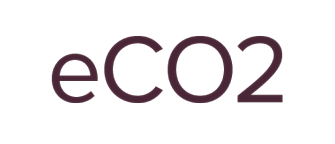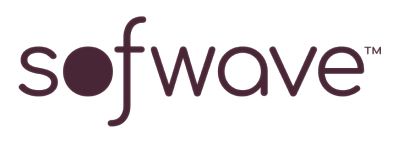
Skin Lesion Removal





















Not all skin concerns are best treated with a serum or peel - some require more targeted clinical intervention. At Little Laser Clinic in Long Island City, NY, we offer specialized treatments for the removal of various skin lesions, providing solutions that enhance both the health and appearance of your skin. Our clinic is equipped with advanced technology and techniques to effectively treat conditions like Dermatosis Papulosa Nigra (DPN), skin tags, moles, syringomas, rhinophyma, and xanthelasma. Each treatment is tailored to meet the unique needs of our clients, ensuring optimal results with minimal discomfort and downtime.
Christine Chen, PA-C, brings a dermatology-based perspective to every procedure. With advanced laser technologies and a deep understanding of different skin types - including skin of color - she tailors treatment plans to each individual for optimal aesthetic outcomes and smooth healing. All procedures are performed in-office with minimal discomfort and downtime.

include laser, excision, or chemical therapy, depending on the type of lesion

Safe removal of common skin lesions, including DPN, moles, syringomas, and more

Suitable for all skin types, including sensitive skin and skin of color

Minimal discomfort and downtime
We specialize in the removal of clinical skin lesions to eliminate or reduce benign skin growths that may be cosmetically undesirable, cause discomfort, or require ongoing medical monitoring. These lesions can vary widely in appearance and cause, from hormone-related growths to genetic conditions or sun exposure.
At Little Laser Clinic, we use a range of methods tailored to the lesion’s size, type, and location. Treatments may include laser ablation, minor surgical excision, or chemical agents such as trichloroacetic acid (TCA). The goal is to remove the lesion cleanly, with minimal damage to the surrounding skin, while minimizing the risk of scarring or recurrence.

Before your procedure begins, you’ll meet with Christine Chen, PA-C, for a detailed consultation and skin evaluation. She'll assess the type, size, and location of the lesion and walk you through the treatment plan best suited for your skin and goals. On the day of the procedure, the area will be cleansed and numbed for your comfort. Most treatments take less than 30 minutes.
Laser-based procedures use focused light energy to gently break down the lesion without cutting the skin, while surgical removals involve a small excision with fine instruments to remove the growth precisely. Chemical methods, such as TCA, may be used in certain cases, especially for flat lesions like xanthelasma.
You’ll receive detailed aftercare instructions to support smooth healing. Most treatments allow you to return to normal activities quickly, usually on the same day.

Depending on the type of lesion being removed - whether it’s a mole, syringoma, DPN, or another growth - Christine may recommend laser treatment, excision, or a chemical technique like TCA. Learn more about the most common types of lesions we treat:

Dermatosis Papulosa Nigra is a common skin condition characterized by small, dark brown or black spots that typically appear on the cheeks, neck, chest, and back. These lesions are especially prevalent among people of color. At our clinic, we use advanced laser technology to safely and effectively remove these lesions. The laser targets the DPN lesions, heating them precisely to destroy the unwanted skin cells without harming the surrounding tissue. This treatment is quick, mostly painless, and results in a significant improvement in skin appearance, helping clients achieve a clearer and more uniform complexion.

Skin tags are small, soft, skin-colored growths that commonly occur in areas where skin rubs against skin or clothing, such as the eyelids, neck, armpits, and groin. While skin tags are benign, they can be unsightly or cause discomfort. Our clinic offers effective scarless treatment for skin tags. The choice of treatment depends on the size and location of the skin tags. Most procedures are quick, with minimal pain and recovery time, allowing for an immediate return to daily activities.

Moles are another type of skin lesion that many individuals choose to have removed for cosmetic reasons or because they pose a potential health risk. Moles can vary in color and size and can be flat or raised. At Little Laser Clinic, we perform mole removal using surgical methods or laser treatment, depending on the mole’s characteristics and the patient’s preferences. Laser mole removal is a non-invasive option that uses intense light to break down the pigment within the mole. This method is ideal for smaller, non-cancerous moles and must be evaluated on an individual basis.

Syringomas are benign, flesh-colored bumps caused by overactive sweat glands. They are typically found around the eyes, cheeks, and lower eyelids. Although syringomas are harmless, they can be aesthetically displeasing. We treat syringomas using a precise laser technique that targets the sweat glands, minimizing the appearance of these bumps. The process involves minimal discomfort, and patients can notice significant improvement after just one or two sessions.

Rhinophyma is a severe form of rosacea that leads to a thickening of the skin on the nose, resulting in a bulbous, enlarged appearance. This condition can be particularly distressing due to its visibility and impact on the facial structure. At our clinic, we use CO2 laser resurfacing to treat rhinophyma effectively. This method carefully removes the excess tissue and reshapes the nose, improving skin texture and contour. The CO2 laser also stimulates collagen production, aiding in the healing process and restoring a more normal appearance to the nose.

Xanthelasma are yellowish plaques that occur primarily on the eyelids and are commonly associated with lipid disorders. These lesions are not harmful but can be cosmetically unappealing. We offer specialized treatments for xanthelasma, including TCA cross, which is effective in removing these plaques. In other cases, laser treatment may be recommended. The laser targets and vaporizes the fatty deposits, leading to a smooth and improved eyelid appearance. Treatment for xanthelasma may require several sessions, and we provide comprehensive care to achieve the best results with minimal impact on the delicate eyelid skin.

Removing benign skin lesions can significantly improve your skin’s appearance and how you feel about it, especially when the lesions are on highly visible areas like the face, neck, or chest. For many clients, it's not just about aesthetics - t's about comfort, confidence, and simplifying their skincare routine.
Our Long Island City skin lesion removal can help improve skin clarity, reduce irritation from skin tags, address long-term cosmetic concerns like syringomas or DPN, support a smoother skin texture, and restore a more refined appearance to areas like the eyelids, nose, or jawline.
Skin lesion removal is an excellent option if you’re dealing with one or more growths that are visible, irritating, or simply not aligned with your cosmetic goals. Common candidates include adults with:
Lesion removal is not appropriate for suspicious or changing moles that require a biopsy first. It’s also not recommended during pregnancy or for individuals with active infections in the treatment area.
During your consultation for skin lesion removal Long Island City skin rejuvenation expert, Christine Chen, PA-C, will assess your skin and walk you through realistic expectations based on your skin type, lesion type, and desired results.


Recovery depends on the method used and the size and location of the lesion. Most laser-based removals involve minimal downtime - just a few days of mild redness or scabbing. Excisional procedures may take slightly longer to heal but typically don’t require more than basic wound care.
To support healing and reduce the risk of pigmentation or scarring, we recommend:
Christine will provide clear, personalized aftercare instructions for your skin type and lesion. Most clients are back to their regular routine the same or the next day.

In most cases, the lesion is visibly reduced or removed immediately after treatment, though the final result is seen after the skin fully heals - typically within 1 to 2 weeks.
For laser-based treatments, any redness or texture issues may resolve gradually as new skin regenerates. Some pigment-based lesions like DPN may temporarily darken before sloughing off.
Once the lesion is gone, results are long-lasting. Most benign lesions do not return in the same location. However, conditions like syringomas, skin tags, or DPN may recur over time, especially if there’s a genetic or hormonal component. If that happens, touch-up treatments can be scheduled as needed.
Christine Chen, PA-C, has over a decade of dermatology and aesthetic experience - an ideal combination for treating visible skin lesions with precision, safety, and a deep understanding of skin biology. Her familiarity with skin of color and complex skin types allows her to treat even the most delicate areas conservatively without compromising results.
At Little Laser Clinic, we understand the importance of skin health and the impact that visible skin lesions can have on self-esteem. Our clinic is committed to providing the highest standard of care, using state-of-the-art technology and techniques to treat a variety of skin conditions. From the removal of common skin tags and moles to more complex conditions like rhinophyma and syringomas, our experienced team ensures that each client receives personalized treatment plans designed to meet their specific needs and aesthetic goals. If you are considering the removal of any skin lesions, we invite you to schedule a consultation with us. Let us help you achieve clearer, healthier skin with treatments that are effective, safe, and tailored to you.
Most procedures are minimally uncomfortable and performed with numbing cream or local anesthesia. Depending on the method used, clients typically report a quick pinch or a sensation of warmth.
In many cases, no. However, certain types of lesions - like syringomas or DPN, can recur over time. Christine will help you understand your specific risks and what maintenance might look like.
When performed correctly, yes. At Little Laser Clinic, we utilize lasers that are safe for all Fitzpatrick skin types and carefully adjust treatment settings to minimize the risk of hyperpigmentation or scarring.
Most patients heal within 7-10 days, though healing time can vary depending on the type of lesion and treatment method. Minor redness or crusting is common but typically resolves quickly.
Yes. We often treat multiple lesions in a single session, especially when they are clustered or located on the same area of the body.
We take every precaution to minimize scarring. Most lesions, particularly those removed by laser, heal with minimal to no visible scarring, especially when aftercare instructions are followed closely.
Christine will evaluate any mole or lesion before treatment. If something appears suspicious, she may recommend a biopsy or refer you for further dermatologic evaluation before removal.
We treat lesions on the face, neck, chest, eyelids, underarms, and other high-friction or visible areas of the body. Some treatment methods may vary depending on the location of the lesion and the sensitivity of the skin in the treatment area.
Yes. A consultation allows Christine to examine the lesion, determine the best method of removal, and ensure the treatment is right for you.